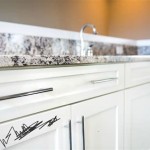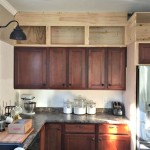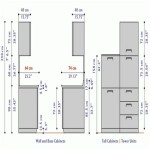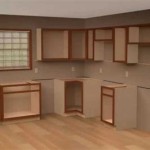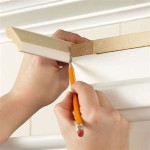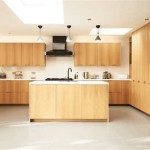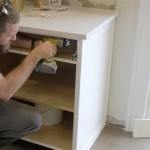Is It Better to Spray Paint Kitchen Cabinets? Essential Aspects to Consider
Kitchen cabinets are among the most prominent features of a kitchen, influencing its overall style and functionality. When considering a kitchen upgrade, painting your cabinets offers an affordable and versatile option. However, the decision of whether to brush or spray paint your cabinets can significantly impact the outcome.
This article delves into the essential aspects of spray painting kitchen cabinets, providing a comprehensive guide to its advantages, drawbacks, and key considerations. By exploring these aspects, you can make an informed decision on the painting method best suited for your kitchen renovation.
Benefits of Spray Painting Kitchen Cabinets:
1. Smooth and Even Finish:
Spray painting utilizes an airless or compressed air-powered sprayer, delivering a fine mist of paint that evenly coats surfaces. This results in a smooth, professional-looking finish without brush strokes or uneven application.
2. Time-Saving:
Compared to brushing, spray painting can significantly reduce the time required to paint cabinets. The sprayer covers a larger surface area faster, eliminating the need for multiple passes with a brush.
3. Reduced Paint Waste:
Spray guns atomize the paint into fine particles, minimizing paint waste. This efficient application process ensures that only the necessary amount of paint is used, resulting in cost savings.
Drawbacks of Spray Painting Kitchen Cabinets:
1. Requires Proper Ventilation:
Spray painting generates fumes and overspray, necessitating proper ventilation. A well-ventilated workspace or an outdoor area is crucial to avoid breathing in harmful particles.
2. Potential for Unwanted Overspray:
If not properly controlled, spray guns can produce overspray, which can drift onto nearby surfaces. This requires careful preparation, including covering and protecting adjacent areas.
3. Need for Specialized Equipment:
Spray painting requires a sprayer, air compressor, and protective gear. These tools can be expensive to purchase or rent, adding to the overall cost of the project.
Key Considerations for Spray Painting Kitchen Cabinets:
1. Surface Preparation:
Thoroughly cleaning and sanding the cabinets before painting is essential for proper paint adhesion. Remove any dirt, grease, or previous finishes to ensure a smooth and even surface.
2. Paint Choice:
Select a paint specifically formulated for kitchen cabinets. These paints offer durability, resistance to moisture and heat, and easy cleaning.
3. Technique and Skill:
Mastering the spray painting technique takes practice. Start with test pieces to become familiar with the sprayer and paint flow before tackling the actual cabinets.
4. Safety Precautions:
Wear a respirator, gloves, and safety glasses when spray painting. Proper ventilation and protection are crucial to avoid inhaling harmful fumes or particles.
Conclusion:
Spray painting kitchen cabinets offers advantages in terms of a smooth finish, time-saving, and reduced paint waste. However, it also presents drawbacks such as the need for proper ventilation, potential overspray, and specialized equipment. By carefully considering the benefits and limitations, along with the key considerations outlined above, you can make an informed decision on whether spray painting is the best option for your kitchen renovation project.

3 Ways To Spray Kitchen Cabinets In The Sprayworks

Is It Better To Spray Or Roll Kitchen Cabinets Painting

Want To Find Out How Spray Paint Kitchen Cabinets Like A Pro

Kitchen Spray Painting Decorative Paint Cupboard

Best Way To Paint Cabinets Spray Or Brush

How To Paint Kitchen Cabinets Like The Pros

Kitchen Cabinet Spray Painting The Facelift Company

Spray Painting Kitchen Cabinets Pictures Ideas From

How To Spray Paint Kitchen Units Pintyplus

Want To Find Out How Spray Paint Kitchen Cabinets Like A Pro
Related Posts

